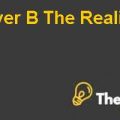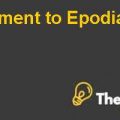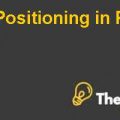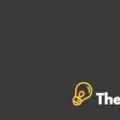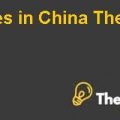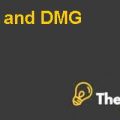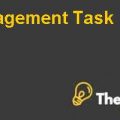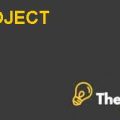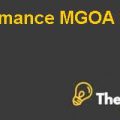Question 1a
Identify up to FIVE items or areas where it could be argued that Harnischfeger managed its financial reporting numbers (e.g., but not limited to, earnings) in 1984. Estimate the effect of each on Harnischfeger’s 1984 reported profits, if any. (12 pts) Grading: 5 = outstanding ; 4 = v. good ; 2-3 = good ; 1 = bad ; 0 = .
The five items or the areas where Harnischfeger Corporation had managed its earnings and intervened purposefully in the financial reporting process of the company from the recognition point of view. As per the definition of the earnings management, all the items discussed below are not directly related to the 1984 profits. Some of the items are less debatable while others are more. In the year 1984:
- Harnischfeger Corporation had changed its depreciation method to straight line method for all the depreciable assets from the accelerated method. The cumulative impact of this change was that it had increased the after tax net income of Harnischfeger Corporation by $ 11.005 million in the year 1984 and this did not include the reduction in the depreciation expense for the current year. GAAP had stated that such retrospective changes should be reported within the entire net income of the change year but Harnischfeger Corporation could not restate the previous years of the company. The management had also not reported the reduction in depreciation expense for the 1984 year as the major effect of the change was from fixing the previous years.
- The management of the company had changed its assumption for the rate of return in determining the pension expenses. The rate in 1982 was 7.25%, in 1983 it was 8% and now it had been increased to 9% in 1984. The pension plan was also restructured in 1984 and as a result of the excess plant assets of the company had recaptured $ 39.3 million. Both of these changes had decreased the pension expense by $ 4 million in 1984 and this would go forward for 10 years with recurring effects as stated in Note 11 in the exhibits.
Harnischfeger Corporation Harvard Case Solution & Analysis
The management had liquidated the LIFO inventories of Harnischfeger Corporation and this had increased the net profits by $ 2.4 million as stated in Note 7. The taxable income had also increased by the same amount but as the tax rate was 0% in 1984 therefore, the actual taxes would not have increased as stated in Note 12. The cash flows would be low by spending less on inventory and also high due to any tax as a result of LIFO dip.
This is just a sample partial work. Please place the order on the website to get your own originally done case solution.


